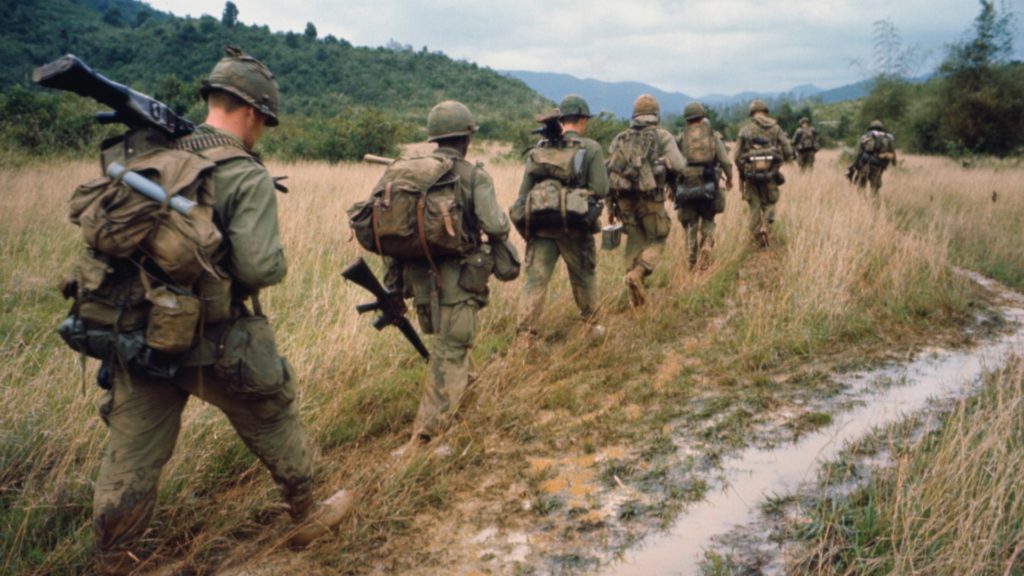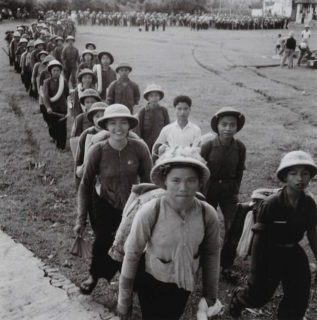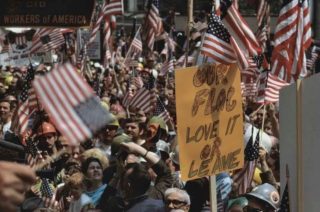
By Jacob Hillesheim | Rewire
We take political news coverage for granted today—even though most people don’t understand the assumptions reporters make when writing stories or why certain stories appear in their Facebook news feed. The fact is that the news media shapes public opinion about current events in profound and unexpected ways.
Take the Vietnam War, the country’s first “television war.” By 1965, more than 90 percent of U.S. households had a television and almost 60 percent of them used it to get most of their news.
The new medium and the lack of government censorship granted the average person living in the U.S. unprecedented access to the Vietnam War.
But how did this really impact what people thought about our involvement in Vietnam? In the first of several articles leading up to the new documentary series “The Vietnam War,” directed by Ken Burns and Lynn Novick, premiering Sept. 17 on PBS, Rewire examines the relationship between media coverage and public opinion of the Vietnam War.
A shift in public opinion
Public opinion polls are never perfect, but they provide a useful tool for measuring the public’s view of the Vietnam War. In 1965, Americans were largely supportive. Fully 64 percent believed that America was right to send troops to Vietnam and only 21 percent disagreed.
These numbers did not change dramatically until May 1966, when the percentage of Americans who saw the Vietnam War as “a mistake” jumped ten points, likely due to increasing casualties. The polls fluctuated over the next year but showed increasing disenchantment with the war.
The power of photographs
The Tet Offensive was a turning point for public opinion. On Jan. 30, the Vietcong attacked 120 American and South Vietnamese locations. The U.S. regained all its lost ground, but the Tet Offensive was political defeat for the U.S., partly due to media coverage.

Americans were shocked to see Marines battling Vietcong commandos for the U.S. embassy in Saigon, the center of the American presence in Vietnam. A now-famous photo of a South Vietnamese general executing a Vietcong prisoner forced Americans to question their allies. CBS news anchor Walter Cronkite reported that the U.S. was “mired in stalemate.” This may not seem devastating today, but there is simply no one Americans trust today like they trusted Walter Cronkite in 1968.
Worst of all, the scale and scope of the offensive led many Americans to believe that their leaders were lying to them about American progress in Vietnam. As a result, the polls shifted. Those who viewed Vietnam as “not a mistake” would never again be in the majority.
The polls continued trending against the war until U.S. troops were withdrawn in 1973. Only two polls showed a significant change. A September 1969 poll showed a seven point uptick in opposition to the war from January. That June, Time magazine published the names and photographs of all 242 Americans killed over a one-week period. Given the nine months between the polls, however, that increase in dissent could also be explained by continuing casualties.
The other large jump was in May 1970. President Richard Nixon’s Cambodian Incursion and the ensuing protests, including the Kent State shootings when the Ohio National Guard fired live rounds into a crowd of unruly protesters, increased opposition to the war by five points. Curiously, the percentage of Americans who viewed Vietnam as “not a mistake” increased too.
Uncensored images had mixed affects
The impact of television coverage of the Vietnam War was meaningful, but probably in a different way than is usually explained. The traditional view holds that Americans watched the news in horror and were pushed against the war by graphic and misleading portrayals of the war.
That interpretation is simply not supported by the Gallup polls conducted throughout the war. Many of the examples used to support the traditional view, including the exposure of the My Lai Massacre and a broadly published photograph of several Vietnamese children, one naked, fleeing a village mistakenly napalmed by the South Vietnamese, did not impact the next poll at all.

This is not to say, however, that the traditional view of the media’s impact during the war is useless. Television coverage, graphic and uncensored for the first time, probably did decrease support for the war over the long-term. It showed the true costs of the war to people in the U.S., who increasingly concluded that Vietnam was not worth the price they were paying.
The traditional narrative also holds true for the Tet Offensive. The shock of media coverage forced Americans to view the war in a new way, and they did not like what they saw. Approval ratings for President Lyndon Johnson and his handling of the war dropped more than 10 percent. The number of people in the U.S. who self-identified as a “hawk,” or supportive of U.S. involvement in the Vietnam War (“doves” opposed it), dropped almost 20 percent. By June 1968, 72 percent of the country believed the United States was either “losing” or “standing still” in Vietnam.
The intensity of the traditional narrative’s anecdotal evidence, however, suggests another impact of the “television war,” one that continues today. Perhaps media coverage of Vietnam did not win over “no opinions,” turn hawks into doves or vice versa. Instead, it made both sides louder and more entrenched in their opinions.
The Vietnam War premieres on TPT in September.
![]() This article originally appeared on Rewire
This article originally appeared on Rewire
© Twin Cities Public Television - 2017. All rights reserved.
Read Next



